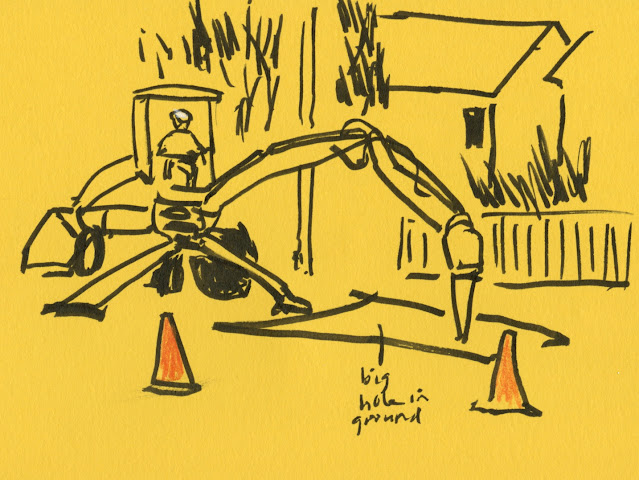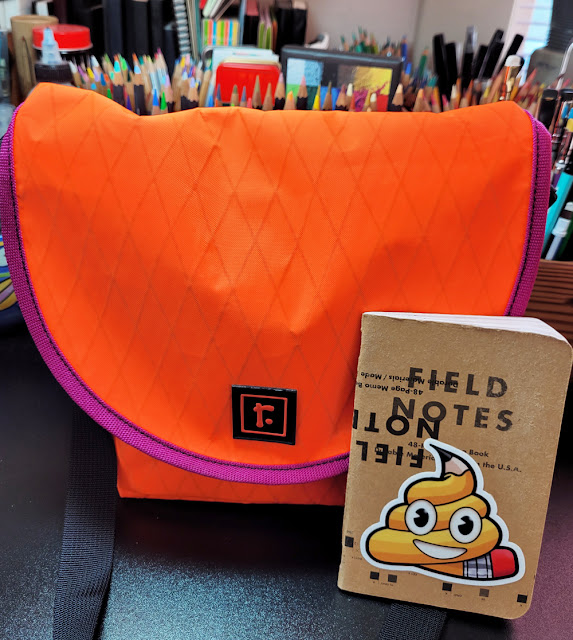 |
| My latest Rickshaw bag in eye-searing orange for fall! (Field Notes shown for scale) |
Although I frequently discuss materials I’m using, and I’ve
mentioned issues that have come up since I committed to using a smaller bag, it
has been quite a while since I wrote a post specifically on my bag and sketch
kit. I recently bought a new mini-size Rickshaw Zero Messenger Bag for
the change of the season, which is as good an occasion as any for this post.
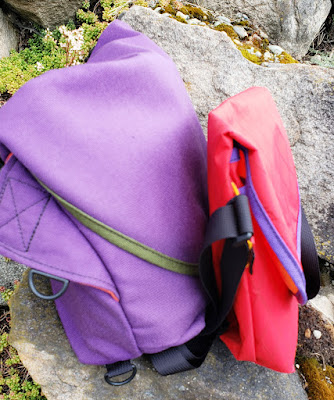 |
These two older bags show the size difference.
Left: "Small" Rickshaw messenger bag; right: "mini" size. |
First, I want to summarize various mumblings I’ve made about using a smaller daily-carry bag. After nearly a decade of using Rickshaw’s messenger bag in the “small” size as my everyday-carry, I started using the smaller “mini” size
at the beginning of the pandemic. Since I was hardly going anywhere except
on daily walks and occasional errands, I didn’t need to carry as much. I also
began sketching more while taking walks, so using the smaller bag as my simplified
sketch bag made sense.
After I started going out more again, I used the larger bag
at sketch outings and other occasions when I wanted to bring a larger
sketchbook, but I still took the mini on fitness walks. (Switching bags
constantly was a dangerous business – I left behind my entire wallet once,
including my driver’s license, when I drove across town for a sketch outing.)
Eventually,
I realized that the mini bag had become my daily-carry without much conscious
effort on my part. I just found myself using the larger bag less and less, and
when I did, it felt heavy and cumbersome. I enjoyed the freedom and lighter
weight of the mini, whether I was fitness walking or not.
It took me a long time to judiciously pare down my sketch
materials, but I knew I was ready. I finally put the larger bags away and made
the full commitment to the mini. Now, when I’m in the mood for a larger
sketchbook, or on those rare occasions when I use watercolors in the field, I
simply grab a tote bag as a supplement. (Ironically, I made the same decision nine years ago when I was considering various bag options for
travel – but that time, the tote was a supplement to my larger Rickshaw bag!
I’ve come a long way since then, and my shoulder thanks me for it.)
On to the new bag: For the coming wet months, I chose
Rickshaw’s waterproof Xpac fabric for the exterior in eyeball-searing Orange
Flo! I’ve already had comments from friends as well as strangers on the street
about the high-viz color, which makes me feel safer when walking.
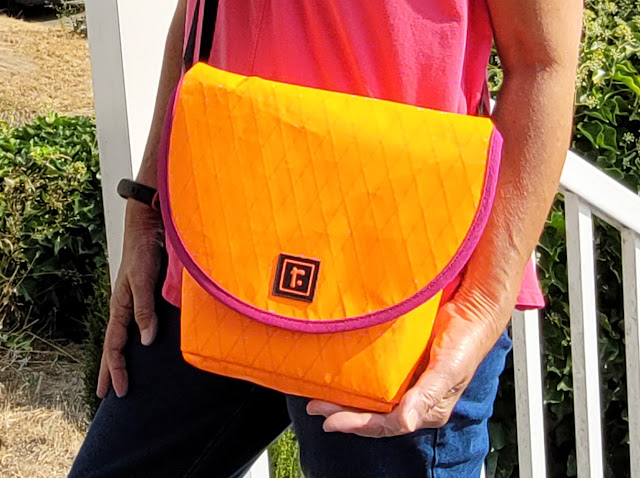 |
| Over-exposed in this image, the bag looks more yellow-orange than it really is. The photo at the top of post shows the color more accurately. But I wouldn't mind a bag in this yellow-orange, too! |
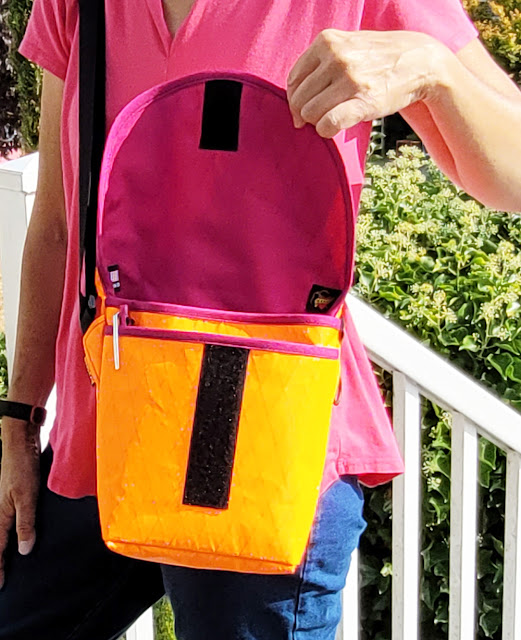 |
| Fuchsia interior and trim |
 |
| Two A6-size sketchbooks, materials, glasses take up the larger compartment. |
As you can see from the bird’s-eye view, my two pairs of
prescription glasses (regular and shades) take up a substantial portion of the
interior’s larger compartment, which is unfortunate, but I haven’t figured out
a way to slim those down. The front pocket holds my phone, a Field Notes
notebook, keys and a mask. The only other non-sketching item I carry is my tiny
Rickshaw snap wallet (which, other than the bag itself, is my most
essential Rickshaw product).
Switching from an A5-size sketchbook (a size I
had been using most of my sketching life) to an A6 that is half the size was
probably my most radical change in materials. My current favorites are an A6 Hahnemühle sketchbook and a similar size Uglybook.
 |
| Hahnemuhle 100% cotton watercolor book and Uglybook, both A6, are my everyday-carry sketchbooks. (Stickers by Angelope Design, Dapper Notes, Rickshaw Bags) |
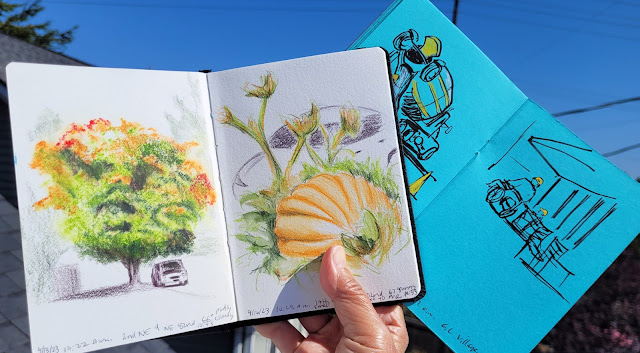 |
| A lot of sketching goes into small books! |
My other sketch materials are a bit of a snooze. Other than
changing out the colored pencils frequently, the basic materials haven’t
changed much in a long time. My rule is that everything except the Derwent water spritzer must fit into the Rickshaw pencil case. (The one I’m using
is a prototype that was never produced. It’s slightly larger than the standard Waldo field case, which is made to hold a Field Notes-size sketchbook.)Total weight of the mini bag and contents is 2 pounds, 9 ounces. My larger Rickshaw, at its most recent weigh-in in December 2019 after a big diet, was 3 pounds, 10 ounces (according to my minimalism challenge blog post, before the diet, the bag weighed 4 pounds, 2 ounces).
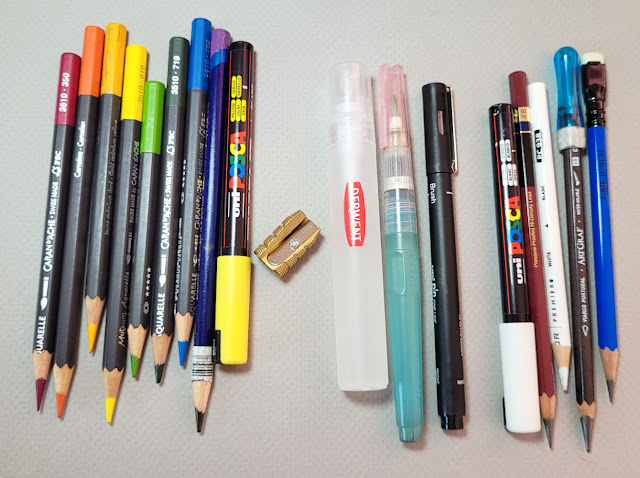 |
| Today's selection. The colors change frequently, but most other materials remain consistent. |
 |
| My rule is that all materials except the spritzer must fit in this Rickshaw case. |
That’s it – as lean and mean as can be! It’s probably not a sketch kit or even a bag size that most sketchers would willingly use, but it suits my standing sketching style and fitness-walking routine. In other words, it affirms my blog’s tagline: Urban sketching: It’s not a hobby; it's a lifestyle.










































